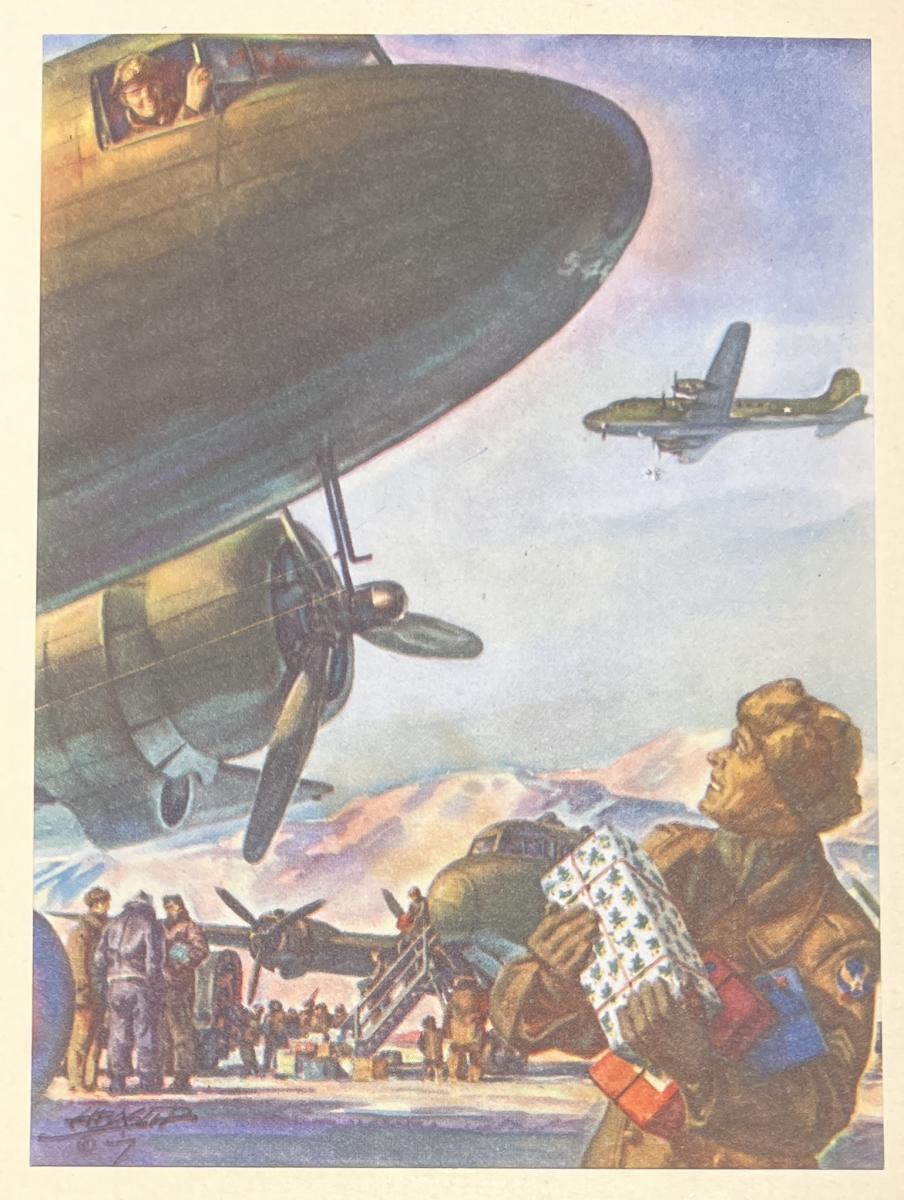Do you still send personal, paper holiday greetings? If you’ve gotten out of the habit, Hagley Library’s new collection from the American Artists Group (AAG) might prompt you to start up again.
 AAG was founded in New York City in 1934 by theatrical printer Samuel Golden (1895-1963), along with thirty-eight prominent American artists, with the twin goals of helping artists earn a living during the difficult Depression years and bringing contemporary American art into the average person’s home. The best way to achieve the latter needed to be accessible, attractive, and affordable. The Christmas card fit the bill, and so somewhat ironically, this Jewish family business achieved its success in the Christmas market.
AAG was founded in New York City in 1934 by theatrical printer Samuel Golden (1895-1963), along with thirty-eight prominent American artists, with the twin goals of helping artists earn a living during the difficult Depression years and bringing contemporary American art into the average person’s home. The best way to achieve the latter needed to be accessible, attractive, and affordable. The Christmas card fit the bill, and so somewhat ironically, this Jewish family business achieved its success in the Christmas market.
AAG expanded over the decades to encompass at its peak more than 400 artists, including big names such as Rockwell Kent, Diego Rivera, John Sloan and Helen Farr Sloan, Benton Spruance, Tasha Tudor, and Wanda Gag. Artists were paid royalties for their work, in alignment with Samuel Golden’s socialist principles. This contrasted with the typical greeting card business model, in which an artist’s work was purchased outright. Golden was also committed to elevating the quality of American Christmas cards, promoting “artistry and genuine feeling” over the “gewgaws, garishes, and stale conventionality”[1] that he felt had invaded the market. AAG cards were sold in department stores across the country—both upmarket like Lord & Taylor and Saks Fifth Avenue and more middle class like Gimbel’s—in lavish sales albums, from which a customer could select a card design to be printed with their name and a personalized greeting. Nearly 300 such albums are in the collection, offering a visual feast and a record of how tastes have changed over time, from the WPA style of the 1930s, to the patriotic imagery of the WWII years (see right), through the sparkle and glitter of the 1950s and groovy moods of the ‘60s and ‘70s, all the way to ‘80s neon.

Although Christmas cards have always the focus of AAG’s activities, the business also published books on art and artists, produced calendars, and pursued the occasional non-Christmas line, such as the Art in Correspondence social stationary sets of the 1950s. Additionally, AAG regularly exhibited original artwork in touring exhibitions in places ordinary people might visit like schools, libraries, and bookstores, truly democratizing the world of fine art. During the war years, many of these exhibitions directly supported the war effort.

The American Artists Group collection at Hagley—in addition to the sales albums—includes scrapbooks, photographs, publicity materials, and printing samples. Of particular interest are the artist files, which include extensive correspondence between the artists and Samuel Golden and offer a close-up look and veritable who’s who of the art scene, particularly in New York, from the 1930s through the 1960s. Golden enjoyed close friendships and family ties with many AAG artists, which is reflected in their correspondence.
The collection will be open for researchers in 2025. Reproductions of classic AAG cards are available directly from American Artists Group.
[1] Golden, Samuel. Press release, “The American Artists Group: A Background Summary,” 1957. American Artists Group records. Hagley Museum and Library.
Diane E. Bockrath is the Processing and Collections Archivist at Hagley Museum and Library
